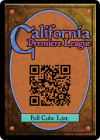What is your platonic ideal of a creature? Like what's a good example of what you want more of

When you open a booster pack with
Timeless Dragon, you can't help but think "hey, a 5 mana 5/5 dragon, that's not bad!" but then you keep reading and realize the incredible flexibility on offer. Excellent modality is present at first blush, but what's even better is when you look through the pack more and figure out more neat things you can do with it, and appreciate how you have a great beater that loves to just sit in your graveyard.

This monster tells you exactly what to do with it: play instants and sorceries and get rewarded in a huge way. It's a tense mini game that doesn't add unnecessary complexity, a 2-drop that begs removal or an increase in aggression. It has a ton more play than that of course, but that baseline is delightful and very
blue.

I've talked about
Triarch Praetorian a lot here, but as someone who used to drool over the possibilities of getting in with a
Skulking Ghost, having an efficient artifact beater that can draw cards if it's failed its primary mission represents a game plan I can immediately get behind.
 Inti, Seneschal of the Sun
Inti, Seneschal of the Sun is everything I want in a Magic card. Evocative art, flavor, name, etc. Powerful and practical. Easy to grok but has a ton going on. Your opponent will (rarely) get randomly messed up by not reading it fully. It makes you wonder what else you can make it work with -- you can tell immediately that it's not a downside by any stretch, but it gets the gears turning to figure out how to best take advantage of it.
 Priest of Titania
Priest of Titania is a classic that visually evokes the beauty possible in a fantasy board game and, like Thing in the Ice, tells you what to do with it. The exciting thing here is the wonder and potential of "what can I possibly do with all that mana??" New players love the tribal aspect -- the flavor added to their draft makes them feel like they have a solid grasp of what they're supposed to do as well -- and veterans will smile at the nostalgia evoked from this Urza-era wonder.

What can be said of
Scrapwork Mutt that hasn't been said already? A dreamboat, a darling, a pal. Maybe dogs are better than cats after all.



